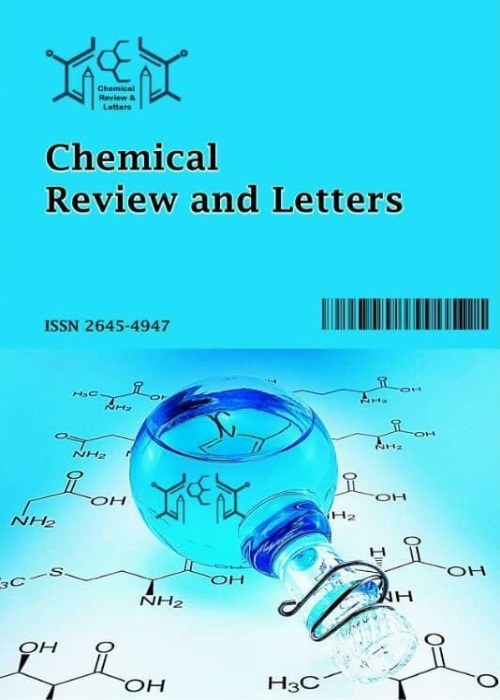Anions Bioremediation Potential of Immobilized Bacteria in Tannery Industrial Effluents from Kano State, Nigeria
Author(s):
Article Type:
Research/Original Article (بدون رتبه معتبر)
Abstract:
The present study aims to assess the potentials of immobilized bacteria in the remediation of anions within the effluents by determining the levels of the anions before and after the remediation. Industrial Effluents Samples from Gashash Tanneries (TAN1), Larabee Tannery Industry (TAN2) and Z Tannery Industries (TAN3) in Kano State, Nigeria were collected monthly for six months (August 2017 to January 2018). Bacteria were isolated from the effluents and immobilized on agar-agar. The effluent samples were analyzed for the anions before and after the treatment using DR/2010 HACH portable data logging spectrophotometer. Different masses (5 g, 10 g, 15 g, 20 g, and 25 g) of the bacteria were used in the treatment of 250 ml of the effluents for ten days in a shaker incubator (Gallenkamp-OC-4364-L) at the temperature 30 °C and speed of 60 rpm. Pre-treatment analysis of the effluents for nitrate (NO-3), Sulphate (SO2-4), Phosphate (PO3-4) and Chloride (Cl-) give the following results; NO-3 ranged (25.35±17.16-28.12±10.72 mg/l); SO2-4 (67.00±5.93-114.83±53.20 mg/l); PO3-4 (26.16±22.93-34.17±16.73 mg/l) and Cl- (22.57±9.64-26.00a±4.86 mg/l). No statistical difference (p ≤ 0.05) was observed for all the anions among the different industries. The bacterial isolates were identified as Neisseria spp, Bacillus cereus, and Staphylococcus aureus, in TAN1, TAN2, and TAN3, respectively. After treatment of the effluents with the different masses of the isolated bacteria, the mean level of NO-3 were found to range as (6.17±6.67-20.78±7.76); SO2-4 (25.73±17.84-46.00±46.81); PO3-4 (11.45±12.02-28.19±9.09) and Cl-(0.38±1.83-15.36±13.58). The results of Post-treatment analysis showed that there is an overall decrease in the levels of the anions determined when compared with that of the pre-treatment. The overall percentage reduction of the immobilized bacteria in the treatment of the respective effluents was in the order TAN3 (57%)>TAN1 (49%)>TAN2 (47%). Therefore, the immobilized bacteria are having higher potentials for the treatment of the anions in the effluents.
Keywords:
Bioremediation , Anion , Bacteria , Effluent , Immobilization , Tannery
Language:
English
Published:
Chemical Review and Letters, Volume:4 Issue: 1, Winter 2021
Pages:
43 to 53
https://magiran.com/p2667510
دانلود و مطالعه متن این مقاله با یکی از روشهای زیر امکان پذیر است:
اشتراک شخصی
با عضویت و پرداخت آنلاین حق اشتراک یکساله به مبلغ 1,390,000ريال میتوانید 70 عنوان مطلب دانلود کنید!
اشتراک سازمانی
به کتابخانه دانشگاه یا محل کار خود پیشنهاد کنید تا اشتراک سازمانی این پایگاه را برای دسترسی نامحدود همه کاربران به متن مطالب تهیه نمایند!
توجه!
- حق عضویت دریافتی صرف حمایت از نشریات عضو و نگهداری، تکمیل و توسعه مگیران میشود.
- پرداخت حق اشتراک و دانلود مقالات اجازه بازنشر آن در سایر رسانههای چاپی و دیجیتال را به کاربر نمیدهد.
In order to view content subscription is required
Personal subscription
Subscribe magiran.com for 70 € euros via PayPal and download 70 articles during a year.
Organization subscription
Please contact us to subscribe your university or library for unlimited access!


